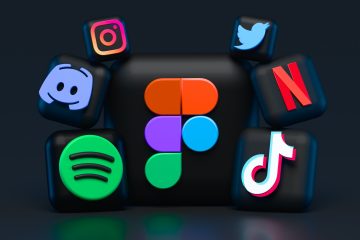Facebook founder Mark Zuckerberg announced that we will continue to see drastically less content created by companies in our news feeds a few years back. The reactions of marketing experts were that the organic distribution of content on Facebook is dead.
But what does it look like on other platforms? And does that mean you should focus on advertising alone instead of organic distribution this year?
This blog post answers these questions!
By this year, a fine-tuned social media strategy is a must, most companies already have a large amount of relevant data to use and the competition for attention is fierce.
In addition, social media and their algorithms are constantly updated. It has become essential for companies to stay up to date on the changes, as social media marketing can be crucial to a company’s success.
This year, it’s important to remember the following points when putting together your social media strategy:
- Invest in advertising, but don’t forget about organic content!
- Measure, analyze and optimize.
- Create high quality laser-focused content for your specific audience.
- Keep up to date on how platforms and their algorithms are evolving!
- Read on for a broader understanding of these points, about what organic dissemination and advertising really means, and how they differ from one another in terms of use.
Contents
Organic dispersal vs. Advertising
Organic content dissemination refers to the dissemination of content that happens through your network when people share, like, comment or otherwise engage with something you posted for free. The more people pay attention to the content, the more visibility it gets (in theory, or at least before).
Constant changes in the social media algorithms have made us see more and more posts by private individuals and fewer companies.
It’s not just Facebook that has limited organic distribution. Almost all social media sites have followed suit, while raising advertising prices.
Some platforms have addressed the problems that arose with “fake news” in connection with the 2016 US presidential election as they explained why they have restricted organic distribution.
But it is companies and organizations that are most affected, not politicians. A more logical explanation for the updates in the algorithms is that platforms, such as Facebook, obviously want to make money from companies that distribute their content.
Why is advertising more effective?
A common misconception is that organic dissemination is more effective than advertising because organic dissemination is considered more “personal” or “authentic”. But the truth is that advertising is more effective than organic distribution. Why?
Advertising leads to better conversion – advertising makes it easier to reach the right person at the right time.
Advertising is more effective for conversion, but many expert blogs write about diversifying and investing in both advertising and organic distribution. The reason for this can be found below.
Test, hone, implement!
It is extremely important to ensure that your content is well formulated, relevant and tailored to your target audience.
Organic content gives you a chance to test yourself for free before you spend money on advertising.
You probably already have a certain amount of followers. Use them to listen, collect data, measure, optimize and refine your content before posting an ad to distribute your content. It is strategically smart and guarantees better ROI (return on investment).
Easy said:
Organic dissemination is good for testing, for commitment and for building trust with existing customers.
Advertising is good for conversion.
Now that you know how to test yourself, there is one thing you need to figure out before setting out your strategy on social media: Which platform does your target audience use?
Where exactly do your customers hang?
It is important to keep track of which social media works for your company’s marketing and business goals.
According to a 2017 report by Hubspot, the three most important platforms in B2B marketing are Facebook, LinkedIn and Twitter. Instagram also ranks high on the list, and it is becoming increasingly popular with companies to create a profile on the platform!
But how well does organic dissemination and advertising work on the platforms, and is there any platform where organic dissemination works better than just as a strategic test tool?
Until 2014, it was relatively easy for companies to reach their customers via organic distribution on Facebook. But since then the reach of organic content has dropped.
Due to Facebook’s death sentence for organic distribution (introduced at the beginning of the post), it does not look positive in relation to organic distribution for 2018.
According to experts, the number of views for organic content will be close to zero thanks to the updated algorithm.
While Facebook basically blocked organic distribution, they have raised advertising prices. Regardless, there are important factors that suggest continued advertising on Facebook!
Facebook is the king of social media: with 2.3 billion users logging in every month, it is the largest social media platform. In addition, Facebook still has a steady growth in its user volume.
The platform has spent a lot of time developing its platform for marketers. It provides (for example) excellent opportunities to reach very specific, niche audiences.
Facebook is definitely a “pay-to-play” platform, but because of the incredible number of users who log in every day, and its advanced marketing platform, it is still worthwhile for most companies to invest in FB advertising in 2018.
In 2017, LinkedIn reached 500 million users, and in the near future, LinkedIn is expected to run past all other platforms in B2B marketing efficiency.
Already today, LinkedIn has been proven to outperform both Facebook and Twitter in generating leads, which is very important for B2B marketing.
In addition, organic distribution is booming on LinkedIn, and the competition to appear on users’ feeds is still pretty low!
A study by Buffer (2015) showed that organic distribution can reach 20% of one’s followers on LinkedIn. At best, this percentage can go up to 60 if you post content on the platform at least 20 times a month.
Like Facebook, LinkedIn’s marketing platform is advanced. Microsoft bought LinkedIn a few years ago, and since then the platform has developed a host of new features. The new features are specifically geared to make B2B marketing more effective through advertising.
If you are not already investing heavily in LinkedIn, you should do so this year! Organic spreading works well today, but it can also be worth testing advertising for even better results.
Compared to LinkedIn (and other platforms), Twitter had a tough year in 2017. But Twitter was surprised to report that they had a profitable Q4, which is the first profitable result in their history.
In 2017, Twitter focused on increasing its user volume, but failed to reach its goal. Focusing on users also meant that Twitter did not have the time (or money) to improve its platform in terms of marketing.
Twitter cut costs in almost all other areas, except for increasing user volume to save money (which probably resulted in profitable Q4 results).
Twitter has limited organic distribution more slowly than Facebook, but is considered a pay-to-play platform because it is primarily advertising that can produce significant results for marketers.
There are varying opinions on how it will go for Twitter this year, and whether it’s worth it is putting money and resources on the platform.
Some believe that Twitter is slowly dying out. Others are more positive, and believe that Twitter is still a great place to build relationships with potential B2B customers.
Many may think that Instagram is primarily a B2C platform, but in recent years it has actually shown great potential for B2B marketing as well.
Instagram is growing faster than ever: At the end of 2017, they reported that they have 800 million users, which means they grew by 200 million users in the previous year.
At the same time, the number of company profiles on the platform is growing explosively: only between July and November 2017, the number grew from 15 million to 25 million. 200 million users visit these company profiles daily.
Instagram’s algorithm partially reflects Facebook, since Insta is owned by Facebook. However, organic dispersion has not been restricted to the same extent. However, a major update in 2016 meant that companies today cannot rely on achieving good results solely through organic distribution on this platform either.
In 2016, the flow on Instagram changed from being shown in chronological order to the algorithm deciding what individual users see. What one sees is based on one’s preferences, as Instagram’s algorithm perceives them.
The ads are not affected by a user’s preferences; they are shown to users far in their feed, according to defined audiences.
Therefore, marketers must invest in advertising even on Instagram. When the algorithm selects what is displayed, unpaid posts by companies usually disappear from the user’s feed.
Remember this …
This year it must be focused, analytical and strategic – think quality over quantity and not advertise anywhere.
The competition to appear in Facebook’s, Twitter’s and Instagram’s feeds is becoming increasingly tough, and therefore more and more money will be invested in advertising. It is important to be on the cutting edge and develop a powerful and clear strategy to achieve the best results!
That said: use organic content to test the best way to create engagement. While Facebook, Twitter and Instagram are becoming more and more “pay-to-play” platforms, you can still see positive results through organic distribution on LinkedIn.
Facebook is the social media giant, but LinkedIn’s marketing is most cost-effective in 2018. Twitter’s future is relatively unclear, while Instagram continues to grow and attract more and more companies to the platform.
Remember, the most important year 2018 is to continue to create content that stands out: relevant, engaging content that is well written and responds to your customers’ needs.






